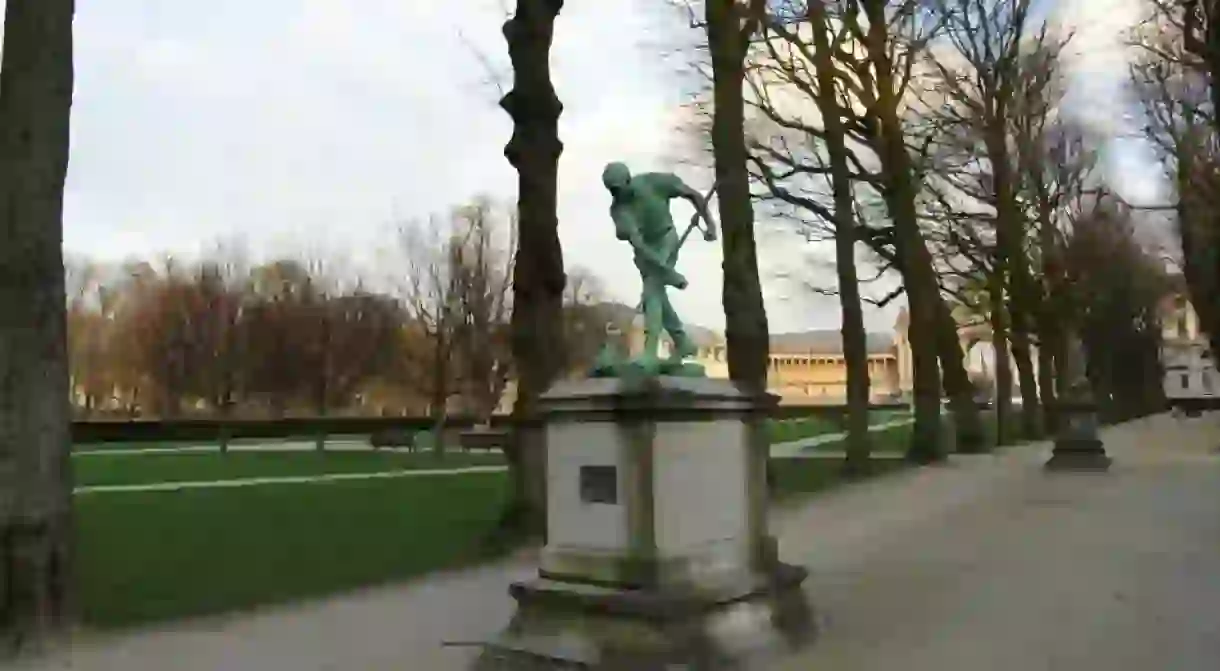Constantin Meunier: Sculptor Of The Belgian People

Painter, but most of all sculptor, Constantin Meunier was described by Auguste Rodin as ‘one of the great artists of our century.’ To the delight of Brusseliers and tourists, some of his best works decorate parks and squares throughout the city, thus, creating an open-air art gallery for all willing to wander.
Cinquantenaire Park
In the Cinquantenaire Park, near the Mérode metro station, visitors can admire The Reaper. This statue was originally made of plaster and then cast in bronze. Its first home was the Botanical Garden of Brussels but was moved to the Cinquantenaire for the 1897 Universal Exhibition. Meunier was not pleased with the statue’s new location (it was placed in a lateral pathway near the West exit) or its pedestal (which he found too monumental). There was talk of moving the piece to the lawn near the main entrance, but the talk remained talk.
As The Reaper suggests, Meunier was fascinated with workers and their daily labor. His art revolves around the representation of Belgium’s working class. Placing himself in the realist tradition, the artist was inspired by the works of Millet and Courbet, both of whom were successful artists when Meunier started his career. Their focus on the peasants of the French countryside inspired him to depict scenes he saw in Belgium’s industrial regions. Like his predecessors in the realist movement, Meunier tried to portray real life while paying close attention to the aesthetics of his compositions. The classical tradition’s anatomical rules are, thus, very visible in his work.
A 15 minutes’ walk from the Cinquantenaire Park is the Chaussée d’Etterbeek. At number 172, you’ll find Meunier’s childhood home where he was born in 1831.
Ambiorix Square
Also not far from the Cinquantenaire is Ambiorix Square, a park which houses The Horse at the Drinking Place or Cheval à L’abrevoir. This statue was originally much smaller and was designed to decorate a public drinking trough. It was later enlarged and set in bronze to decorate this square.

Botanical Garden
Taking the metro to Botanique, sculpture lovers will be pleased to find a dozen statues publicly exposed in Brussels’ Botanical Garden. Two of them, The Sower and The Harvester, are by Constantin Meunier. A note to afternoon explorers: the garden closes at 5 p.m. from October to March and at 6:30 p.m. from April to September.

Canal
A bus ride away, you’ll find one of Meunier’s most impressive works: the Monument au Travail or Monument to Labor. This ode to the working class was inaugurated by the King and Queen of Belgium in 1930, about 25 years after the sculptor’s death. The stone structure of the monument was designed by architect Mario Knauer to display five of Meunier’s bronze statues and four high-relief scenes. Carved out of the stone, these large panels represent the four elements: fire (represented by the industry), earth (the mine), air (the harvest), water (the port).

Constantin Meunier’s obsession with working life comes from the strong emotions he felt when visiting the Borinage, an area in Wallonia that was heavily mined during the industrial revolution. After his visit, Meunier wrote, ‘I am struck by the tragic and timid beauty. Enormous pity overtakes me.’ The artist was both impressed and shocked by working life of the 19th century. The deep-rooted love and admiration Meunier bore for his less-fortunate countrymen have made his work timeless and profoundly enriching for viewers aware of what it represents.
By Marie van Boxel













